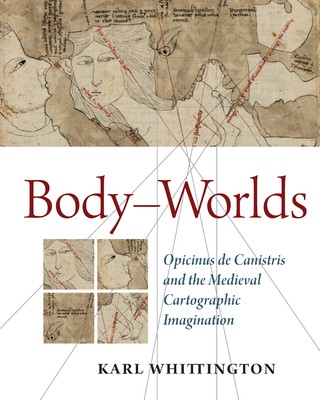
- We will send in 10–14 business days.
- Author: Karl Whittington
- Publisher: PIMS
- Pages: 212
- ISBN-10: 0888444265
- ISBN-13: 9780888444264
- Format: 20.3 x 25.4 x 1.3 cm, minkšti viršeliai
- Language: English
- SAVE -10% with code: EXTRA
Reviews
Description
In 1334, an Italian priest named Opicinus de Canistris fell ill and had a divine vision of continents and oceans transformed into human figures which inspired numerous drawings. While they relate closely to contemporary maps and seacharts, religious iconography, medical illustration, and cosmological diagrams, Opicinus's drawings cannot be assimilated to any of these categories. In their beautiful strangeness they complicate many of our assumptions about medieval visual culture, and spark lines of inquiry into the interplay of religion and science, the practice of experimentation, the operations of allegory in the fourteenth century, and ultimately into the status of representation itself.
EXTRA 10 % discount with code: EXTRA
The promotion ends in 22d.11:27:21
The discount code is valid when purchasing from 10 €. Discounts do not stack.
- Author: Karl Whittington
- Publisher: PIMS
- Pages: 212
- ISBN-10: 0888444265
- ISBN-13: 9780888444264
- Format: 20.3 x 25.4 x 1.3 cm, minkšti viršeliai
- Language: English English
In 1334, an Italian priest named Opicinus de Canistris fell ill and had a divine vision of continents and oceans transformed into human figures which inspired numerous drawings. While they relate closely to contemporary maps and seacharts, religious iconography, medical illustration, and cosmological diagrams, Opicinus's drawings cannot be assimilated to any of these categories. In their beautiful strangeness they complicate many of our assumptions about medieval visual culture, and spark lines of inquiry into the interplay of religion and science, the practice of experimentation, the operations of allegory in the fourteenth century, and ultimately into the status of representation itself.


Reviews